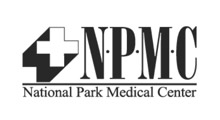Overuse Injuries of the Hip
The different overuse injuries of the hip include: hip bursitis, gluteus medius tear and hip groin disorders.
Hip Bursitis
Hip bursitis is a painful condition caused by inflammation of a bursa in the hip. Bursae are fluid- filled sacs present in joints between bone and soft tissue to reduce friction and provide cushioning during movement.
Causes of Hip Bursitis
Hip bursitis is often seen in people involved in sports such as football and soccer which involve a lot of running. This can lead to overuse and irritation of the bursa causing inflammation. Bursitis may sometimes result from an injury or fall to the hip or after a surgical procedure of the hip.
Symptoms of Hip Bursitis
Hip bursitis results in pain on the outer side of the hip which usually increases with prolonged walking or climbing stairs. The pain is felt more while getting up from a chair and in the night when lying on the affected side. Inflammation of the iliopsoas bursa however results in pain in the groin region.
Gluteus Medius Tear
A gluteus medius tear is a condition characterized by severe strain on the gluteus medius muscle that results in partial or complete rupture of the muscle.
The gluteus medius is one of the major muscles of the hip and is essential for movement of the lower body and keeping the pelvis level during ambulation. The gluteus medius muscle arises from the top of the pelvic bone and attaches to the outer side of the thighbone or femur at the greater trochanter by the gluteus medius tendon. The muscle functions as a hip abductor, controlling side to side movement of the hip and providing stabilization to the joint. Gluteus medius tears often occur at the tendinous attachment to the greater trochanter of the femur bone.
Causes of Gluteus Medius Tears
The tear or rupture of the gluteus medius muscle is commonly seen in runners and athletes involved in high-impact sports such as soccer or basketball. It can occur from sudden bursts of activity and poor flexibility of the gluteus muscle. Any traumatic or overuse injury, or degenerative changes can also lead to partial or complete tear of the gluteus muscle.
Symptoms of Gluteus Medius Tears
The symptoms of a gluteus medius tear involve pain and tenderness over the lateral aspect of the hip which may be aggravated with activities such as running, climbing stairs, prolonged sitting or walking, and lying on the affected side of the hip. One of the main symptoms of a gluteus medius tear is the presence of Trendelenburg’s sign, evidenced by dropping of the pelvis towards the unaffected side during ambulation from being unable to properly bear weight on the affected limb.
Hip Groin Disorders
Hip and groin disorders are more common in athletes, caused by rapid acceleration and deceleration motion.
The rehabilitation time for hip and groin injuries is longer than most other injuries, therefore, early and accurate diagnosis is essential. The management of hip and groin injuries is complex due to the presence of multiple anatomic structures in that region. Moreover, the signs and symptoms of most hip and groin disorders are similar making the diagnosis difficult.
The common sports that result in hip and groin injuries are those which require regular bending, kicking and turning movements such as soccer, ice hockey, basketball, football and tennis. In addition, sports that involve running can also produce hip and groin disorders.
Symptoms of Hip Groin Disorders
Hip pain, one of the common symptoms patients complain of, may not always be felt precisely over the hip joint. Pain may be felt in and around the hip joint and the cause for pain may be multifactorial. The exact position of your hip pain suggests the probable cause or underlying condition causing pain. Pain felt inside the hip joint or your groin area is more likely to be because of problems within the hip joint. Likewise, the pain felt on the outer side of your hip, upper thigh or buttocks may be a result of problems of the muscles, ligaments, tendons and soft tissues surrounding the hip joint. However, certain disease conditions affecting other parts of your body such as lower back or knees also can cause hip pain.
Diagnosis of Overuse Injuries
The diagnosis of overuse injuries involves the following steps:
- Subjective examination that includes complete medical history, past treatment, nature of injury, etc.
- Physical examination
- Observational evaluation of sitting and standing posture, gait patterns from frontal and sagittal plane, muscle wasting, rotational difference between both legs and leg length variances
- Range of motion tests
- Palpation
- Ligament stress tests
- Muscle testing
- Neural tests
Treatments for Overuse Injuries
The treatment of overuse injuries includes physical therapy or exercise therapy, which includes different rehabilitation programs such as warm up, strengthening program and sport specific training. Along with exercises, medications may also be prescribed. Self-care and pain-relieving anti-inflammatory medications offer symptomatic relief. However, the exact cause for the pain needs to be addressed.
Practicing certain measures can avoid aggravation of pain and improve the quality of life. Avoiding physical activities that may worsen the pain, stretching the quadriceps and hamstring muscles and performing warm up exercises before actual exercise regimen help to improve the condition. Applying ice packs over the region of pain for about 15 minutes three to four times daily reduces both pain and swelling.
Surgery is considered if conservative line of management fails.






